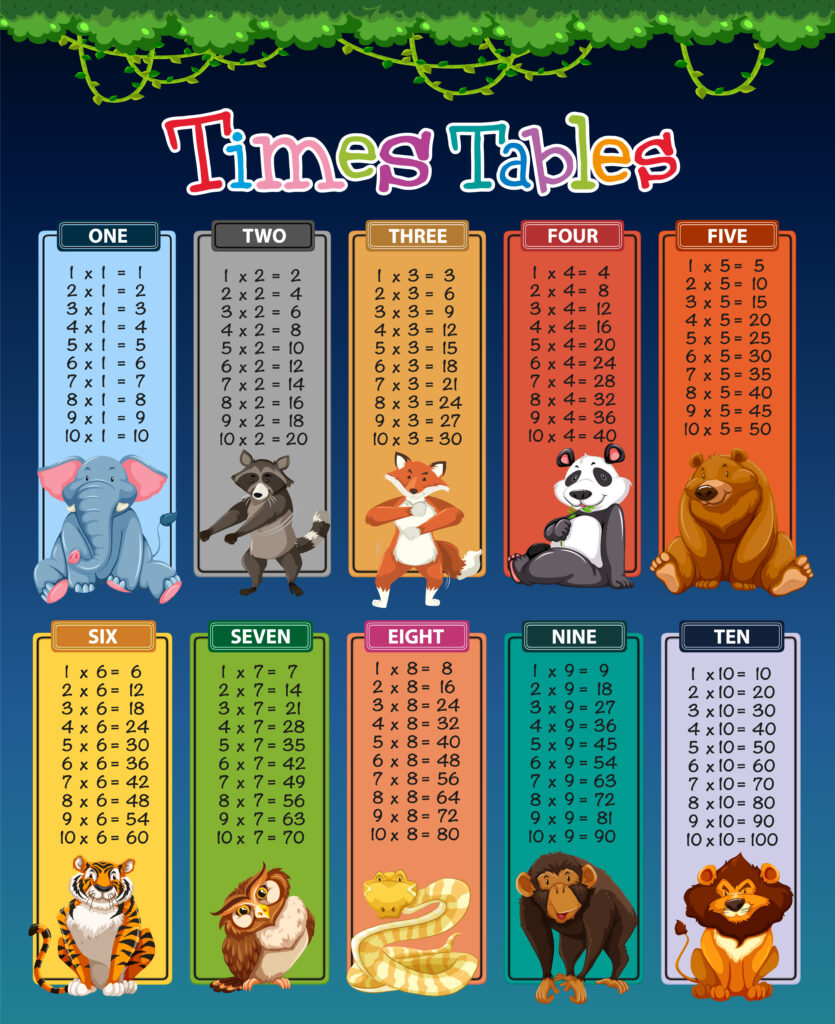Teaching multiplication tables to beginners can feel challenging at first, but with the right approach, it can actually be fun and rewarding. Whether you’re a parent helping your child at home or a teacher guiding students in class, learning times tables is an essential math skill that builds the foundation for division, fractions, and higher-level math.
In this step-by-step guide, we’ll explore practical strategies, fun activities, and proven techniques to make multiplication tables easy for beginners.
Use below multiplication teaching strategies to teach math tables
Start with the Basics: Addition and Grouping
Before introducing multiplication, ensure that children are confident with addition. Multiplication is essentially repeated addition.
- Example: 3 × 4 means 3 groups of 4 → 4 + 4 + 4 = 12.
Using objects like toys, blocks, or candies helps kids visualize the concept.
Teach One Table at a Time
Instead of overwhelming beginners with all tables, start small.
- Begin with the 2s, 5s, and 10s tables because they are the easiest to memorize.
- Once the child is comfortable, move on to 3s, 4s, and 6s, then tackle the harder ones like 7s, 8s, and 9s.

Use Rhymes, Songs, and Patterns
Kids love music and rhythm! Turning multiplication into a catchy song or chant can make learning effortless.
- Example: “Five, ten, fifteen, twenty…” helps reinforce the 5-times table.
- Highlight patterns (like the 10s table always ends with 0, and the 5s table alternates between 0 and 5).
Practice with Flashcards and Games
Flashcards are great for quick practice and memorization. You can also try:
- Online multiplication games
- Board games with dice
- Multiplication bingo
Learning through play keeps kids engaged and reduces stress.
Encourage Daily Practice in Small Sessions
Instead of long study hours, encourage short daily practice sessions (10–15 minutes).
Repetition builds confidence, and consistent exposure helps kids memorize faster.
Apply Multiplication to Real-Life Situations
Show kids how multiplication is useful in daily life:
- “If one apple costs ₹5, how much will 4 apples cost?”
- “If a chair has 4 legs, how many legs do 6 chairs have?”
Real-world examples make learning practical and relatable.
Reward Progress and Celebrate Success
Positive reinforcement goes a long way. Celebrate small achievements with praise, stickers, or a fun activity. This keeps kids motivated and excited to learn more.
Conclusion
Teaching multiplication tables to beginners doesn’t have to be boring or stressful. By starting small, using fun ways to learn multiplication, and practicing regularly, children can quickly gain confidence and mastery over their times tables.
Remember, every child learns at their own pace. Patience, encouragement, and creativity are key to making multiplication fun and easy.
Your math sidekick is here! 🤓 Generate multiplication tables with just one click.
Frequently Asked Questions (FAQs) About Teaching Multiplication Tables
What is the best age to start learning multiplication tables?
Most children start learning multiplication between ages 7–9 (2nd or 3rd grade). However, the right time depends on their comfort with addition and grouping concepts.
What is the best order to teach multiplication tables?
A good order is:
- Start with 2, 5, and 10 (easy and pattern-based).
- Then move to 3, 4, and 6.
- Finally, teach the harder ones like 7, 8, and 9.
How long does it take to memorize multiplication tables?
It varies for each child, but with 10–15 minutes of daily practice, most kids can learn all tables (up to 10 or 12) in about 6–8 weeks.
What are some fun ways to teach multiplication?
- Multiplication songs and rhymes
- Flashcards and bingo games
- Using real-life examples (shopping, cooking, counting objects)
- Online math games and apps
Should kids memorize multiplication tables or understand the concept first?
Understanding the concept (multiplication as repeated addition) should come first. Once kids grasp that, memorization becomes easier and more meaningful.
How can I help if my child struggles with multiplication tables?
- Break down one table at a time.
- Use visual aids (blocks, drawings, charts).
- Practice little but often.
- Stay patient and encourage progress instead of focusing on speed.
